Extinction #3 : The Caspian tiger, a lost subspecies of the endangered Tigers
The biggest members of the cat family, the tiger, solitary in nature but a predator to be feared, they have been seen to reduced in numbers over the years with three out of nine subspecies being extinct, will we one day tell the tales of all tigers tagging them extinct? Welcome to the 3rd issue of EXTINCTION.
We will take a good look at a well-known member of the Panthera Tigris species, "The Caspian Tiger" and try to know what history says about them and just like we always do, bring their concerned relative to the spotlight stating possible ways to help them, it's nice having you here on this discourse.
What They Had Looked Like
Amongst the big cats of history was the Caspian tiger, it's male is larger in size than the female having a length ranging from 270-295cm while that of the female range from 240-260cm. With respect to weight, the male Caspian tiger weight had ranged from 170-240kg while it's female had weighed from 85 to 135 kilograms. Their skull length measured from 297-365.8mm but that of the female measured from 195.7 to 255.5mm.
WikimediaThe Caspian tiger, Author : Unknown, original upload byMollsmolyneuxLicenced under CC BY-SA 3.0
It was noticed that some of them had different size, a tiger killed in 1954 in Koper-Dag around the Sumbar river had its length from head to body to measure 225cm and a skull length of 385 which was noticed to be more than the average range of skull length for this tiger which was sized more than the Siberian tiger when noticed.
Another killed in Prishibinske in 1899 saw a body length to be 270cm its tails was measured to be 90 centimeters long, with its pegs measured about 295cm, they were quite lengthy mammals.
With regards to colour the Caspian tiger has its stripes a mixture cinnamon shades and brown, on their head, neck, middle of the back and their tail was noticed black patterns, they had a form of angular pattern at the base of their tail and their coat in the summer is a bit different with that of the winter, their coat during the winter is seen to be a bit paler having a less distinctive pattern, when compared to other tigers, they were known to have the thickest fur amongst tigers. When compared to the Siberian tiger, it was noticed to have more uniform stripes and brighter in color.
When the genes of the Caspian tiger was taken from specimens found in museums, it was discovered that they were very closely related to the Siberian tiger, and it was also discovered that they might have come from a common ancestry tiger which might have existed about 10000 years ago from Central Asia and they traveled to Russia to establish the population of the Siberian tiger.
Where You Would Have Found Them
The occurrence of the Caspian tiger was known for the Caspian Sea but that was not only where they existed, their occurrence was seen to be around watercourse, edges of lakes river basins, 19th century showed them to have occurred in the Eastern region of Anatolia which was known to be the most western region where the Tiger occurred on earth, they were known to occur in the eastern parts of Turkey which were confirmed when one was killed near Mosul as it was said to have migrated from the south eastern parts of Turkey, they also occurred at Şırnak, Şanlıurfa, Mount Ararat, Hakkari of Turkey.
WikiThe Tigris River , Author : Matthew Glennon (Fnsnet) Licenced under CC BY-SA 3.0
Their occurrence was noticed around Tigris Euphrates river in Syria and Iraq, the Southeastern parts of Caucasus such as areas like the forest of Prishib, the mountain Talysh, and the lowlands of Lenkoran, from Caucasus they moved to the Don River and northwest parts of Persia in the Zangezur mountain, but historic records has it that they occurred mostly in the Caspian Sea just adjacent the mountains of Alborz.
They were also said to have occurred in Central Asia in regions such as the Turkmen, the Sumbar, and the Chandler River, along with the west and South part of Kopet - Dag, also in The areas of Ashkabad. Another was Afghanistan in the jungles of the lower rivers, and also in Hari rud at Herat.
They were found in the environs of Kashan and the Kushka rivers, the Aral Sea, the Amu Darya, Syr-Darya down to Fergana and far down to Tashkent and western areas of Talas Alatau, around the southern areas of the Lake Balkhash and down into Altai mountain, and into the Southern parts of Transbaikalor of West Siberia.
Their occurrence was gotten mostly from examination of the region as these regions were seen to have the wild boar as the numeric dominant of the area, the presence of a watercourse. Animals which occur in similar habitat is the roe deer, the wild pig, and the Bactrian deer.
What They Had For Meals
Just like we know them to be good predators, the Caspian tiger might have had its main prey to be the wild boar but it also had hunted the red deer, the roe deer and some domestic animals like the cattle and dogs to be their meal during the winter season, this was suggested from their relatives in Iran who had these same prey.
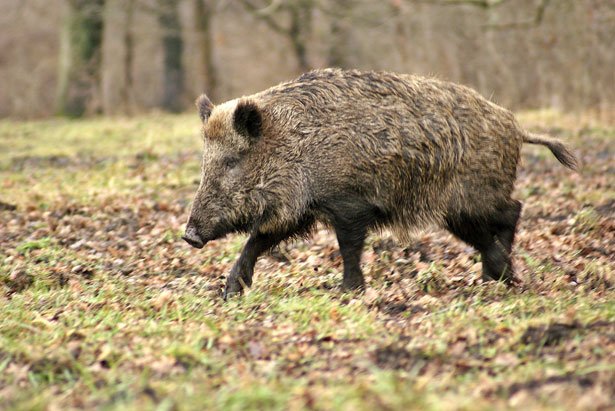
publicdomainpictures: The Wild Boar was a preferred prey
In Turkmenistan, Kazakhstan, and Uzbekistan they might have preyed primarily on the boar and the Bactrian deer. Towards the Amu-Darya rivers they might have preyed on the jungle cats, jackals, and the locust, also in Kazakhstan along the Aral Sea the Caspian tiger might have also preyed on the saiga, wild horses, the mountain sheep, the goitered gazelle and the Mongolian wild Ass.
Also in areas like central Asia Tajikistan and in Kazakhstan they were known to attack horses, dogs and on a rear base camels and just like it's relative the Siberian tiger the might have become man-eaters, attacking humans who came their way.
The Road To Extinction
The Caspian tiger was quite numerous until they began on the road to extinction which saw to their numbers going on a decline up until they were no more, in this section of this article I would try to analyze the possible cause of extinction of the Caspian tiger.
One of the major cause of declination of the Caspian tiger was man, in the early times of the 20th century the Russian government has planned a reclamation program of some land in the area and they termed the tigers in the area a hindrance to that, they had nothing planned for the tigers so soldiers were given the order to eliminate any tiger found around the Caspian Sea which saw them carrying this order as good as they always did, killing the tigers without mercy, this gave a huge blow to their population around the Caspian Sea.
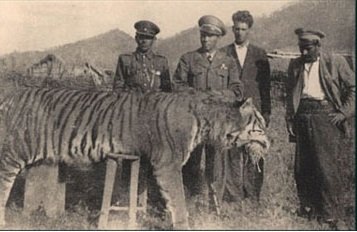
WIKIMEDIA : A Caspian tiger killed in Iran, author: unknown upload byباسم Licensed under CC BY-SA 3.0
After the killing of these tigers instructions were also given to farmers to clear the forest for planting of crops like cotton and rice, this chased any Surviving tiger in the area forcing them to take a retreat to the other forested areas rather than lowlands where they are normally found from there to some marshes which were along large rivers and then deep into mountain areas, this suggested that the declination of their habitat was also a reason for extinction.
When it was finally realized that thes actions might affect this species of tiger and the importance of forest zones, a national park was created in 1938 which went by the name Tigrovaya Balka and also in Tijik, this was aimed to conserve wildlife of which are at decline and the Caspian tiger was one of the aimed species of animals but that was late, this created habitat was the last stronghold of the Caspian tiger which saw their last specimen in 1958.
Before then they have experienced severe hunting by sportsmen who would use the tigers for sports, they also hunted the wild pigs too which was a native to its habitat which saw to it reducing in numbers too.
Reported claims were that the last of the Caspian tiger was shot dead in Iran at the Golestan Park in 1959 but another report came of a sighting in Manasi River basin in China back in 1960. A record from the Amu Darya River saying that they existed there in 1968 was not confirmed, also there were claims of undocumented killing of the Caspian tiger in Turkey in 1970s. In 1997 it was claimed that a Caspian tiger was captured in 1997 in northeast Afghanistan but the most quoted date from their extermination was the 1950s tough so many facts have said that they were extinct even before then.
So it was confirmed that deforestation which led to the losing their habitat and their prey and a result of overhunting by man had led to the disappearance of the Caspian tiger from the earth.
Concerned Relatives - The Tigers
Scientific name: Panthera Tigris
Status: Endangered
We know them to be the largest when the cat family is mentioned having stripes on them which colors black, gray or brown, though they might be seen for other colors. Before now, there existed nine subspecies of the tiger family which are the South Chinese, the Siberian, the Bengal, the Javan, the Bali, the Malayan and the Caspian tigers of which the Caspian, the Bali and the Javan subspecies are now considered extinct and others now endangered.
They have their main range to be forests, swamps, savannah, grasslands rock country and woodlands where they lead their predatory life hunting animals with the ambush system of hunting, they are also good swimmers and can even kill a prey swimming, they are solitary animals always aware of their territory but this do not extend into their mating seasons
And how will the story be told, From thousands of tigers in the wild years back and now down to a number of only about 3200 global population in the wild, would it be lost, will the big cats of the jungle be a story to be told about as being extinct?. Many threats on the tiger have led to this day and it's been also known that despite the loss of the population of the tigers, they still have a long way to go with respect to replenishment of their numbers in the wild, in the next section we will get to know the threats faced by the tiger and how we help conserve them.
The Tigers are now in the endangered list and they can as well go extinct if we do not do something about fighting threats they face and assist in their conservation,
Threat on the tiger and possible Conservation Strategies
Below are some threats they face and some suggested conservation techniques.
Poaching At High Level
Over the years so many animals have been reduced by this act, according to analysis is one of the main threats on the tiger species, almost every part of the tiger is considered as a valuable commodity, starting from its whisker down to its tail, though their decline and a ban on treading of these parts they are still being traded in illegal markets, for use as folk remedies, production of some traditional medicine and it's increased use as a significant cultural symbol in the Asian regions.
When the idea of guarding areas inhabited by these tiger, challenges which came up, the lack of resources to carry out projects and the lack of a good law enforcement against tiger Poaching, although some countries have been fighting real good a war against poaching but it seem like one which will never come to an end fighting against the huge profits which come from this crime, this have led to many forest to be left empty of the tiger which is not a good thing for the forest.
Many have fail to understand that poaching of the tiger goes beyond killing a single tiger, for a female tiger killed, the survival of her cubs is not assured as they may likely be killed when not protected by their mother and also the chances of the killed female tiger to breed more is cut short even with the decreasing number, If a male tiger is killed it might lead to a very strong competition for its territory between Surviving male population and this might as well lead to fight amongst them causing injury or death and hence this has led to a great loss of many of their numbers.
Conservation: With an increased level of poaching on the tiger, they might not survive the effect, hence the fight against poaching of this tiger should be intensified, technologies should be used to monitor the tiger habitats to be able to capture on camera or any other means any activity of poaching and also a strong enforcement of the law on anyone who is caught breaking this law.
There should be an increased amount of Wildlife Rangers and personals to monitor these activities and they should also be empowered in a huge scale by the government and agencies who fight for the conservation of the tigers with hopes to put an end to poaching of this animal.
Loss of Habitat
The Tigers over the years have seen their natural habitat destroyed, fragmented and degraded by the activities of man, a percentage of about 90% of their lands have been affected and this affects their survival in the wild. This loss is due to clearing of forest which they inhabit to use for some agricultural purpose, road building and some development activities by humans.
The tiger is known to be an animal which need a wide range of its habitat for survival as they are well known territorial animals, in a small habitat as that seen now, only a few of them can survive leading to a high risk of inbreeding and thus making them vulnerable to the hands of poachers as they will try to establish their own territory outside a protected area.
Conservation: The destruction of the natural habitat of animals have affected their numbers leading to extinction of so many animals and this have also been affecting the tigers, this is due to human activities such as illegal falling of trees for use by man which have led to wide spread deforestation forest areas, we have to intensify the laws against deforestation if the habitat of these tigers are to survive and also managing areas where they are known to the occur more.
Climate Change Effect
The mangrove forest of Bangladesh and India around the North coast of the India ocean is one of the known habitats for the tiger, this harbour so many species of animals and tend to protect the coastal regions from wind damages and storm occurrence but today the rise of sea level which is being caused by climate change and how this habitat is on the verge of being wiped out by this and this has taken a drastic effect on the tigers inhabiting these places. According to predictions without efforts being put to stop the effect of this, the year 2070 might see the destruction of almost all of the tiger's habitat of Sundarbans.
Conservation: The effect of climate change on an area occurs due to deforestation and land degradation of different forms which contributes to the emissions of annual emission of greenhouse gas, it's important to conserve this given habitat of man hence enforcement of land conservation means should be encouraged by all the countries of the world.
Tigers In Captivity
The level of tiger ownership has increased over the years, in the United States an many tigers live in captivity, more than the entire population of tiger in the whole of Asia on estimate and most of these tigers are owned by many who do not have the necessary training to care for these captive tigers, since they are not accredited zoos and they are posted just for the fun of having them, taking pictures with cubs without minding how negatively this might be affecting the declined population of the tiger species.
When a tiger grows and becomes unsafe to stay with or they would not sit to take photos of, they now term such a liability. Most of these tigers are bred there in the United States and lack of good regulations for them affect their population hence they may be subject to illegal trade.
Conservation: illegal tigers in captive is not a positive way to go with respect to conservation of this species hence laws should be created putting into effect the best ways to combat this threat on the tiger and intense monitoring against illegal trade of tigers.
Conflict With Humans
Just as the extent of their habitat reduce , it increases the probability of contact with humans as the Tigers will try to find prey outside protected areas. Finding themselves in areas inhabited by humans, they might try to find meal from some domestic livestock in the area which many locals tend to depend heavily on.
This gets the locals angry most times and they may go tiger hunting, killing the tigers in the area and selling them in the black market for their valuable price. These local also depends on the forest for their food, timber, and fuel and this will see them clearing more forest areas needed by the Tigers and thus increasing the chances of losing the tigers.
Conservation: local communities near the natural habitat of the Tigers should be well informed of the status of this animal which can be achieved through means of public awareness in the area, also the growing generation should be well informed on the vulnerability of extinction of species of the wild hence this will go a long way to change harsh attacks on the tiger and they should try to stay away from their way avoiding contact in ways possible.
Bringing It All Together
The Caspian tiger a known member of the tiger species is lost, an amazing tiger which was lost to our negligence of the effects of our actions on a population of animal, when I discovered that the government might have had played a great role in the extinction of this species it created a hole in me on how an order to kill will be given to a group of animals in an area, or will I say an order to extinct a specie, it would sound more like it.
Though they later realized that this really affected them, they were late but have this discovery helped the living tigers?. Didn't go into other tigers like the Javan and the Bali tiger which are now extinct (might be one for another day), losing three subspecies should entail we can as well lose them all, hence we should learn a lesson from these and try as much as possible to save the remaining tiger subspecies from the verge of extinction.
Poaching seems to be the major threat to the living tiger species due to their high value in illegal markets, it's so unfortunate that those who go through this illegal wildlife trade look only at what they get to gain without considering how negative this might turn in the future even with respect to other animals being taken from the wild, strong enforcement against this should be enacted and strategies implemented to stop the poaching of animals of the wild.
It's nice having this discourse with you all, on yet another of episode of this series, the tiger is an animal to save today and tomorrow, if you do have any ideas on how to help conserve them, the comment section can shout your thoughts, we can save the tigers, we just have to work together on this.
References
Possible extinction of the Caspian tiger
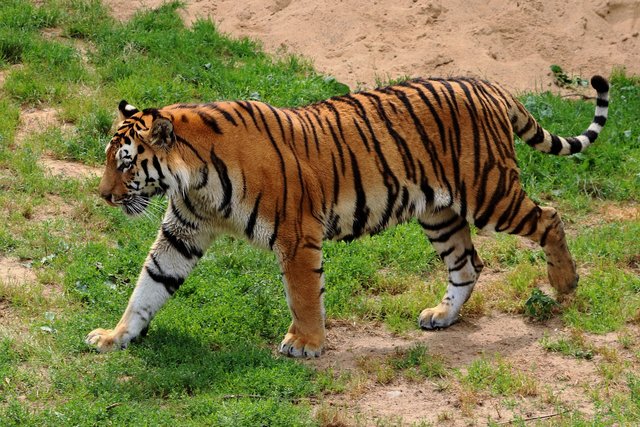
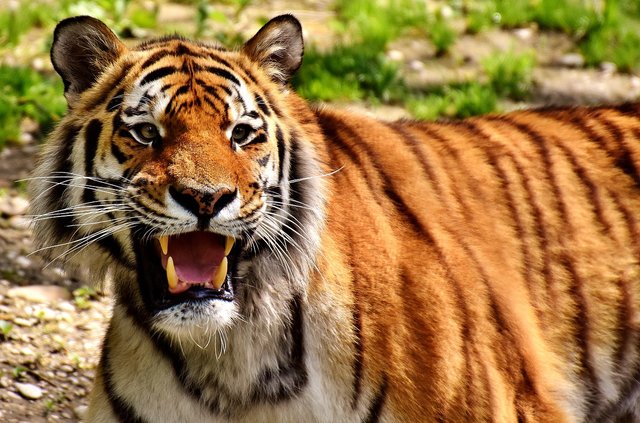
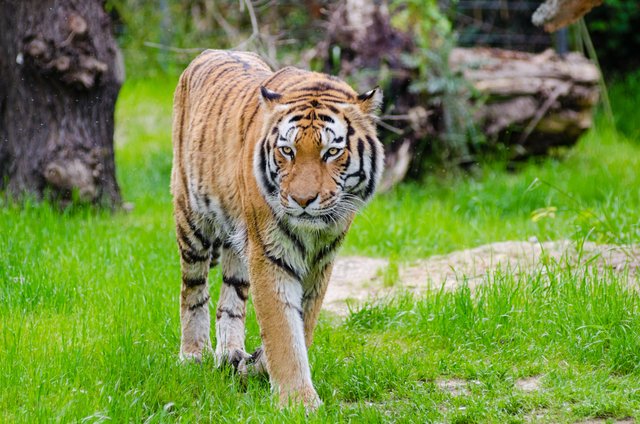
So where is the biggest population of tigers these days? Is it in captivity in America like you said?
With regards to those in captive, the tigers in captive occur more in the United States, for those in the wild the indian subcontinent sees more in the wild there, but mind you, these are on estimate, not facts.
I think in southeast asia, the tiger have his own colony and also one of biggest population. some in sumatra, java, and kalimantan.